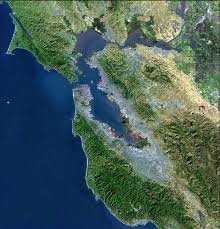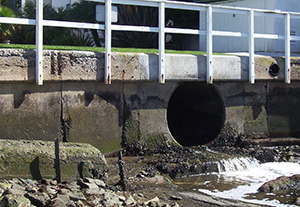The planning, development, and implementation of control measures to reduce pollutant loads in stormwater discharges has become an increasingly high priority component of municipal stormwater management programs in the San Francisco Bay Area. EOA has extensive experience assisting Bay Area municipalities to characterize the urban landscape and identify sources and controls for pollutants such as mercury, PCBs, and waterborne pathogens (typically associated with indicator bacteria). EOA has assisted Bay Area local agencies with all aspects of implementing the Bay mercury and PCBs TMDLs, including leading multiple regional collaborative projects. EOA has helped develop Reasonable Assurance Analyses (RAAs) for cost-optimization of green stormwater infrastructure implementation and other actions to address the TMDL Wasteload Allocations for mercury and PCBs. EOA extensively uses Geographic Information System (GIS) tools to conduct spatial analyses that inform the interpretation and communication of environmental data generated through these types of projects. In addition, our services include:
- Guidance on stormwater permit compliance
- Identifying source areas
- Updating pollutant control strategies
- Developing accounting systems for crediting pollutant load reductions
- Conducting compliance reporting
HIGHLIGHTED PROJECTS

SF Bay Mercury and PCBs Total Maximum Daily Load (TMDL)
Bay Area Stormwater Management Agencies Association
Total Maximum Daily Load (TMDL) projects have recently and are currently being developed for the San Francisco Bay and local water bodies (i.e., urban creeks). EOA provided technical support to the Bay Area Stormwater Management Agencies Association (BASMAA) during the development and adoption of the Mercury and PCBs TMDLs for San Francisco Bay. Technical support has included tracking the TMDL development process, coordinating and updating BASMAA managers, drafting comment letters on behalf of BASMAA, and negotiating stormwater-related language within the TMDL implementation plan. EOA has developed sampling and analysis plans to help meet TMDL goals for Mercury and PCBs for stormwater in Santa Clara and San Mateo Counties. In addition, EOA has also provided assistance on the recently adopted TMDL for Pesticide-Related Toxicity in Urban Creeks.

Newport Bay Fecal Coliform TMDL and Source Management Plan
County of Orange
EOA assisted the County of Orange, Irvine Ranch Water District and the Santa Ana Regional Water Quality Control Board to develop a proposed scope for conducting a Fecal Coliform TMDL for Newport Bay. EOA developed a Work Plan to conduct the health risk assessment associated with elevated levels of microbial contaminants in Newport Bay and facilitated risk management decisions by integrating the health risk assessment with potential water quality program/structural costs. As a follow up to the TMDL, EOA also developed a Fecal Coliform Source Management Plan for the County of Orange. The management plan identified and quantified the contribution of fecal coliform sources to Newport Bay, and identified current and planned practical management actions that could reduce the impacts associated with pathogens in Newport Bay. Source and receiving water monitoring plans were also developed and presented to the Newport Bay Watershed Committee and submitted to the Santa Ana Regional Board in compliance with the TMDL. EOA also developed recommended revisions to the TMDL consistent with the level of public health risk related to pathogens in Newport Bay water.